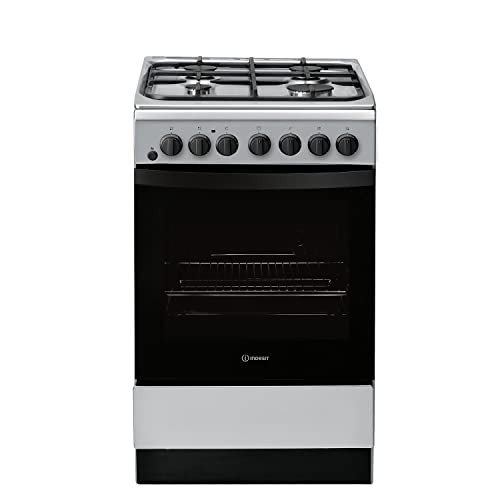Understanding Hobs and Ovens: A Comprehensive Guide for Cooking Enthusiasts
The kitchen is often concerned as the heart of the home, where cooking productions come to life. 2 essential elements of any kitchen are the hob and the oven. While they are both important for cooking and cooking, lots of property owners may not totally comprehend the distinctions, functionalities, and various types offered in the market today. In this short article, we will check out these home appliances in detail, assisting you make notified choices for your cooking needs.
Table of Contents
- What is a Hob?
- 1.1 Types of Hobs
- 1.2 Benefits of Different Hob Types
- What is an Oven?
- 2.1 Types of Ovens
- 2.2 Benefits of Different Oven Types
- Choosing the Right Hob and Oven for Your Kitchen
- Regularly Asked Questions (FAQs)
- Conclusion
What is a Hob?
A hob, frequently called a cooktop, is a cooking surface area that you put cookware on to prepare food. It features a variety of heating aspects and is often set up on counter tops. In Ovens With Hobs , hobs can be found in different styles, technologies, and performances.
1.1 Types of Hobs
There are numerous types of hobs available in the market:
| Type | Description |
|---|---|
| Gas Hob | Utilizes burner for cooking, using precise temperature control. |
| Electric Hob | Runs using electrical heating aspects, typically seen in strong or radiant kinds. |
| Induction Hob | Uses electromagnetic fields to heat pots and pans directly, promoting energy performance. |
| Ceramic Hob | Features a smooth glass top, making use of electric coils below the surface. |
| Strong Plate Hob | Conventional electric hobs with exposed metal plates that heat up. |
1.2 Benefits of Different Hob Types
Gas Hobs:
- Quick heating and cooling.
- Visual flame control for precise cooking.
Electric Hobs:
- Even heating; suitable for simmering and boiling.
- Easy to clean up, particularly flat surfaces.
Induction Hobs:
- Energy-efficient as just the pot heats up.
- Security features, such as automated shut-off.
Ceramic Hobs:
- Attractive aesthetic appeals with a smooth surface.
- Even surfaces for simple cleansing.
Solid Plate Hobs:
- Cost-effective and resilient.
- Helpful for basic cooking needs.
What is an Oven?
An oven is a kitchen home appliance utilized for baking, roasting, and broiling food. Ovens can be standalone units or built into kitchen cabinetry, offering different cooking approaches that can enhance or change components.
2.1 Types of Ovens
Comparable to hobs, there are numerous kinds of ovens, each with its benefits:
| Type | Description |
|---|---|
| Traditional Oven | Operates with heating components, perfect for baking. |
| Stove | Uses fans to distribute hot air, cooking food equally and quickly. |
| Microwave | Cooks food utilizing electro-magnetic radiation; suitable for reheating. |
| Steam Oven | Utilizes steam to cook food, maintaining moisture and nutrients. |
| Wall Oven | Built into the wall, using benefit and visual appeal. |
2.2 Benefits of Different Oven Types
Traditional Ovens:
- Simple to utilize without any complex settings.
- Versatile for different cooking techniques.
Convection Ovens:
- Faster cooking times due to air flow.
- Enhanced browning and crisping for baked goods.
Microwave Ovens:
- Quick cooking or reheating of food.
- Energy-efficient for low-volume cooking.
Steam Ovens:
- Health-conscious cooking that retains nutrients.
- Excellent for baking bread and cooking vegetables.
Wall Ovens:
- Convenient positioning; conserves area.
- Less flexing needed to gain access to cooking meals.
Choosing the Right Hob and Oven for Your Kitchen
When selecting a hob and oven, elements such as space, cooking style, and individual choices need to be considered. Here's a basic guide to help you pick:
Factors to Consider
- Cooking Needs: Evaluate your cooking practices. Do you often bake, or is stovetop cooking more widespread?
- Area Availability: Measure your readily available kitchen space. Some hobs or ovens may require more space than others.
- Fuel Type: Decide between gas and electric, based on availability and individual choices.
- Budget: Determine what you're prepared to invest and discover alternatives within that range.
Quick Tips
- Focus on Efficiency: Look for energy-efficient models to minimize long-term costs.
- Check out Reviews: Explore user evaluations to collect opinions on efficiency and dependability.
- Speak with Professionals: Seek recommendations from kitchen style professionals when preparing your layout.
Often Asked Questions (FAQs)
1. What is Buy Oven Online in between a hob and an oven?
A hob is a cooking surface area usually for stovetop cooking, while an oven is an enclosed area used for baking, roasting, and broiling food.
2. Can I utilize any pot on an induction hob?
No, induction hobs require magnetic pots and pans. Stainless steel and cast iron pots work, but non-magnetic products like aluminum won't.
3. How do convection ovens differ from traditional ovens?
Convection ovens employ fans to flow hot air for even cooking, whereas traditional ovens do not have this feature.
4. Is it possible to have both a hob and oven as a single unit?
Yes, there are variety cookers that incorporate a hob and an oven within one device, using an extensive cooking service.
5. How do I clean my hob and oven?
The majority of hobs and ovens have suggested cleansing approaches depending on their products. It is a good idea to consult the producer's directions for the best practices.
Understanding the differences between hobs and ovens is vital for anybody wanting to optimize their kitchen space or improve their cooking abilities. By understanding the numerous types, their benefits, and how to choose the ideal ones for your requirements, cooking can end up being a more satisfying and efficient experience. Whether you are a knowledgeable chef or a novice cook, the ideal combination of hob and oven can raise your culinary developments to new heights.

